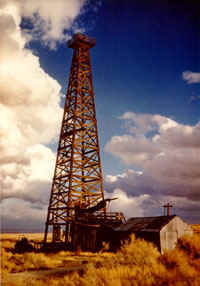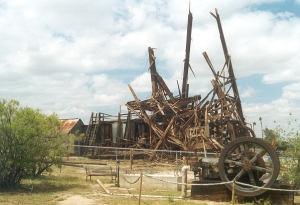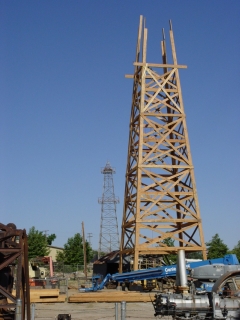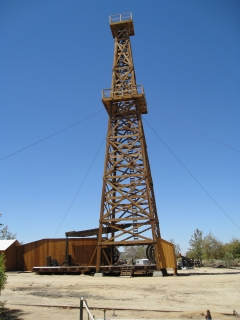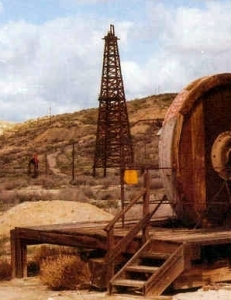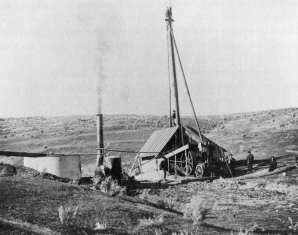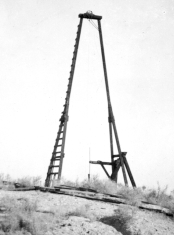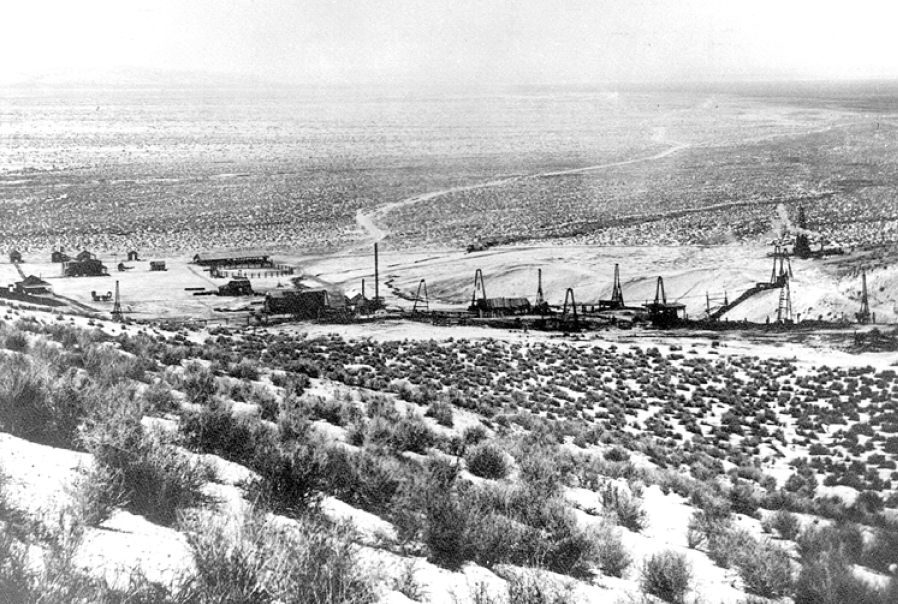|
Old Stuff from the Oil Fields
The McNee #19 was drilled in 1913, and produced until 1985. After production died, the old derrick remained for another decade until Chevron pulled it down after a wind storm, which left the Jameson #17 at the West Kern Museum as the only wooden derrick still standing in the state. The derrick is in the background of the left-hand photo, and the foreground shows the wooden band wheel of the still-surviving Jameson #46 pumpjack.
The Kern County Museum has had a replica wooden derrick for over half a century. When it was built, lots of the original wooden derricks were still standing in the valley, but now there are none. The lower left photo below shows a crew building the museum in 1956. The cable tool on this derrick actually works and reportedly drilled 60 or so feet of hole. According to Dean Van Zant, who was one of the builders, operations came to a halt when the beer ran out. 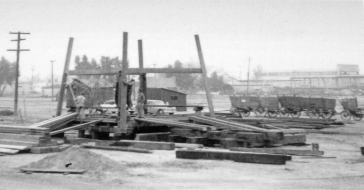
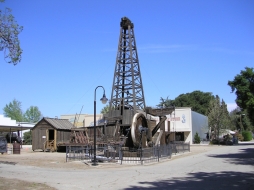
The Evolution of Derricks in the San Joaquin Valley The first derricks to appear in the San Joaquin Valley were simple affairs used by Hugh Blodgett and Solomon Jewett to drill wells at their Asphalt Workings at Sunset field, near modern Maricopa. The photo below left shows one of their pole derricks on the Tevis well in 1895, and the photo below right shows a more typical derrick-style used on their wells in the 1890s. Several of these early derricks are evident in in the lowermost photo below that shows the Jewett and Blodgett workings at Sunset.
The more elaborate wooden derricks that most of us are familiar with appeared in the late 1890s as soon as serious development of Midway-Sunset, Coalinga and Kern River fields began in earnest. These rigs had an entire lexicon of words to describe all of the parts of the derrick. The diagram below provides a sampler of the terminology. 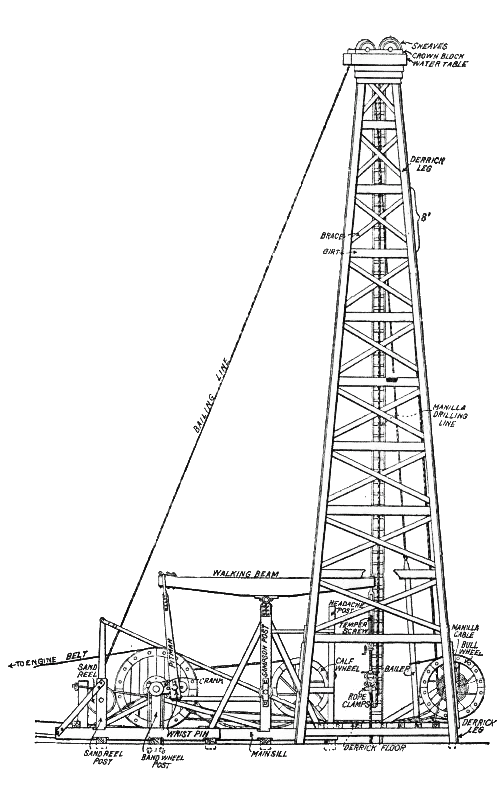
The first steel derrick in the valley went up in Kern County in 1924. These were permanent structures, and for another decade or so they continued to be used with cable tools. An early steel derrick in the valley is shown below, replete with the sampson post and walking beam it was drilled with, now converted to a pumping jack. 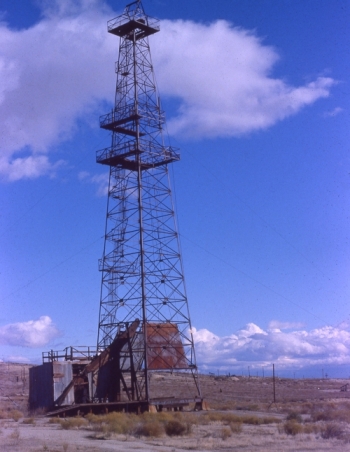
The rotary rigs of today are drilled with movable steel derricks that can be transported from one drill site to another. The picture below shows the derrick for the ARCO 91X-3 horizontal well that was drilled at Yowlumne field in 1997. 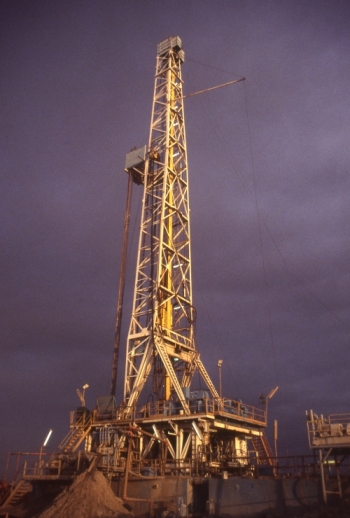
|
|

